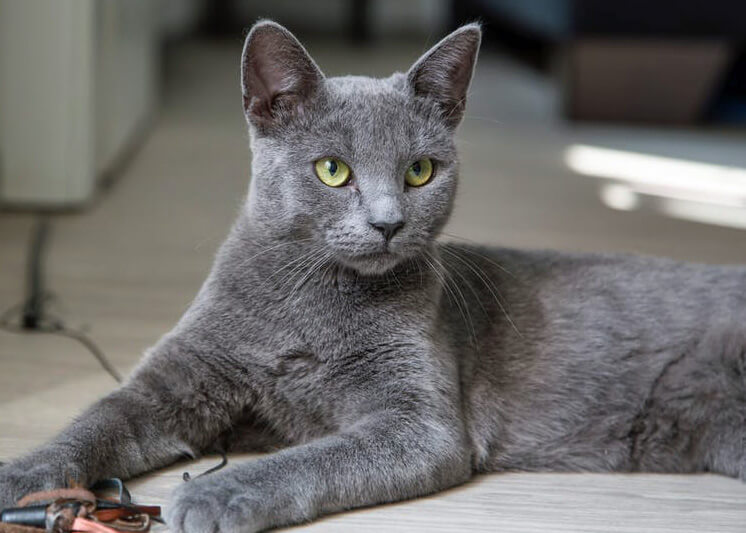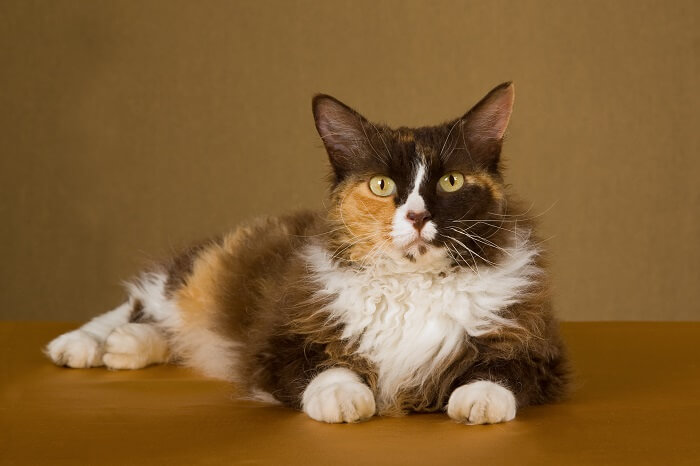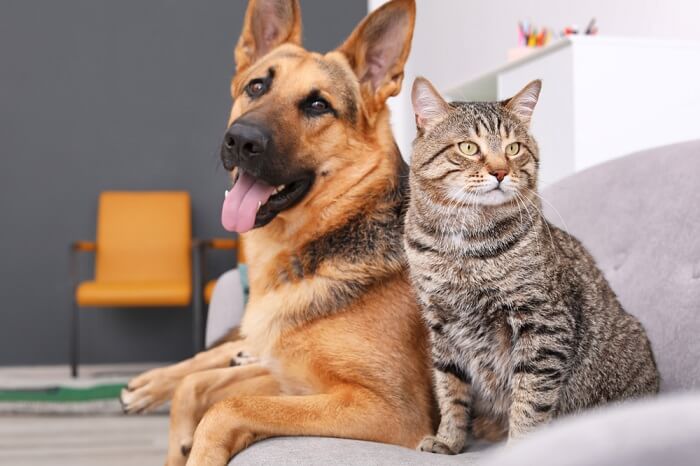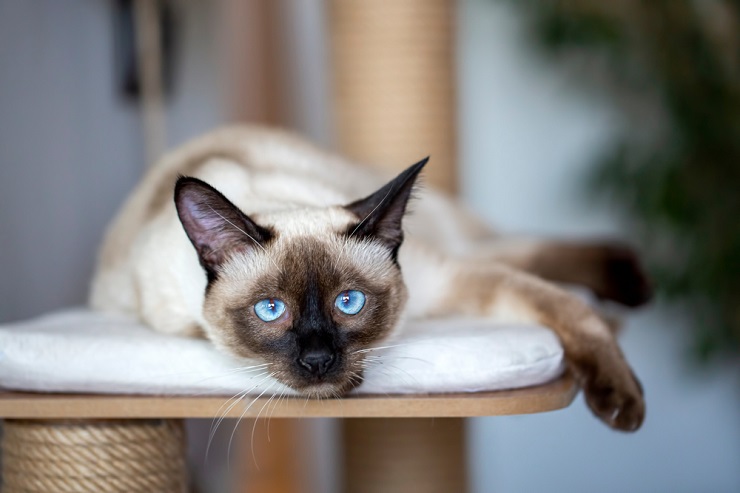Russian Blue : Cat Breeds
This page contains affiliate links. We may earn money or products from the companies mentioned in this post through our independently chosen links, which earn us a commission. Learn More
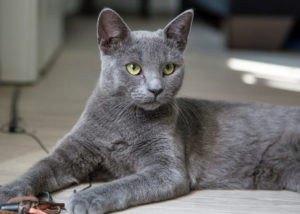
The Russian Blue cat, sometimes called Archangel Blues, is a naturally occurring breed that is believed to have originated in the port of Arkhangelsk, Russia. It is believed that sailors brought Russian Blues from the Archangel Isles over to Great Britain and Northern Europe in the 1860s. The breeds thick coat validates the theory that they developed in a cold climate and to this day are still common in Russia.
Appearance
The Russian Blue has broad, round, wide set eyes that are a dark vivid green. Their silvery coat is described as thick, plush and soft like velvet, with little shedding. The ears are large, wide at the base and set smoothly toward the sides of the head. The Russian Blue is a medium size cat, with a long and firmly muscled body. The average weight is 4.4 to 15.4 pounds when full grown and males are usually larger than females. The coat color is a solid bright blue and each hair appears to be dipped in silver. Russian Blues are registered in only the color blue and only a short coat length.
Personality
The Russian Blue is a devoted, affectionate and gentle cat with a somewhat shy nature around strangers. Fetching is a favorite pastime but they enjoy playing with a variety of toys. They are a curious and mellow breed who is known for their friendliness and intelligence, but can be somewhat reserved. This breed develops loyal bonds to their owners as well as other family pets. Russian Blues like a routine and dislike environmental changes more than the average cat. They especially dislike changes in their feeding schedule. They tend to be picky about the cleanliness of their litter boxes and will complain if it’s less than spotless.
Health
Russian Blues have an average life expectancy of around 10 to 20 years and some have lived up to 25 years. They have few health problems, not prone to illness and are not known to have genetic problems. This breed does tend to love food and can overeat, causing weight problems. Cat food is best measured out and served on a schedule.

